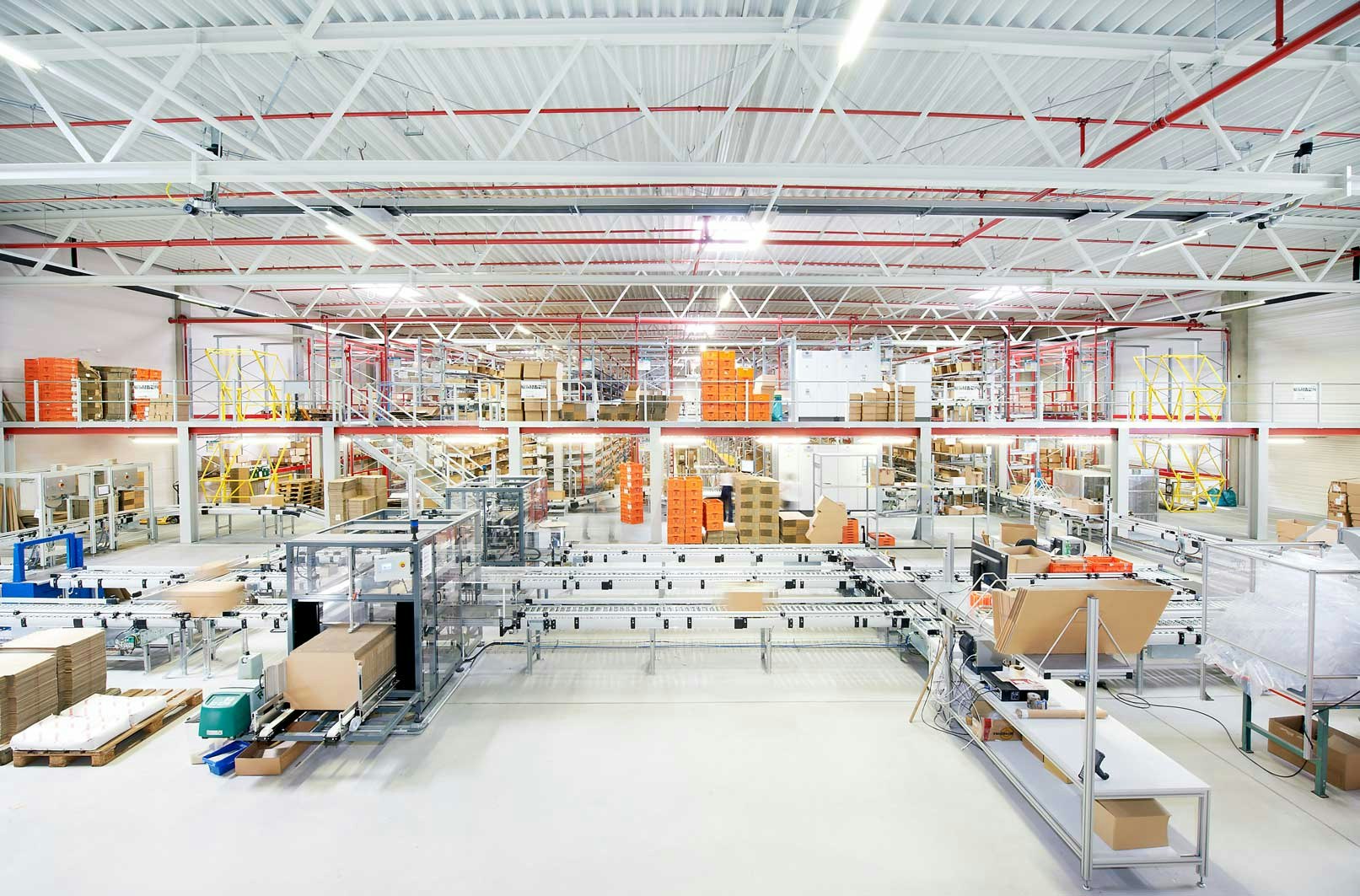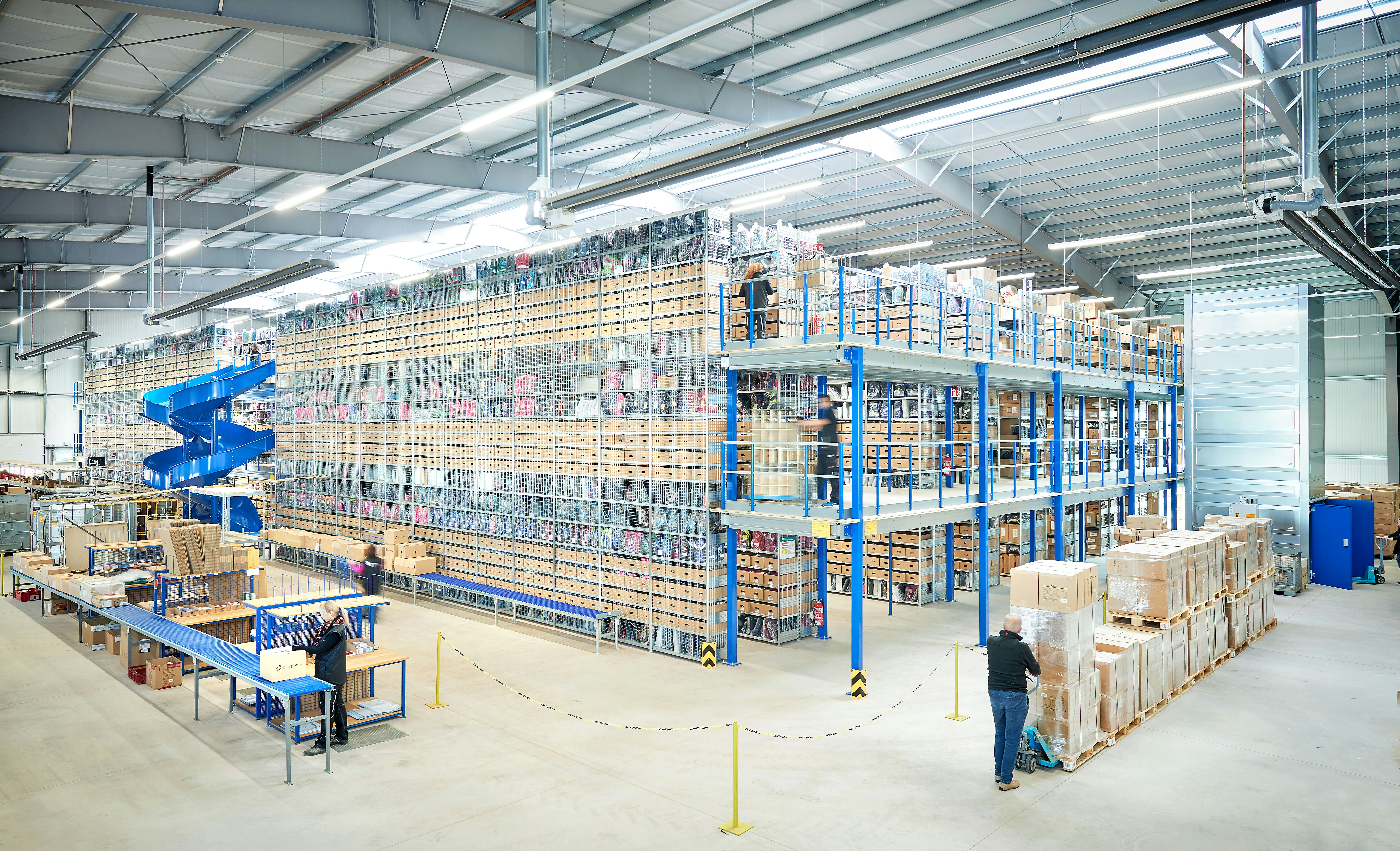Reduce walking distances in the warehouse - 5 ideas for quickly implementable measures

Cost factor logistics and order picking
Smooth and trouble-free processes in all work processes are essential for a well-functioning logistics department. There should be no hooks, especially during the processes in the warehouse. As central functions of the logistics department, order picking and the associated routes are of great importance for the overall economic success of an entire company. But in many cases this is exactly where most errors and malfunctions in the workflow occur. Scientific studies by the TU Munich have shown that the error rate here is around 0.3 percent. At the same time, about half of all storage costs fall on order picking. This makes it all the more important to avoid unnecessary additional costs due to errors. This can have serious consequences.
1. create structure and strategy
Nothing steals more time from the employees of a warehouse than unfavorably arranged and sorted goods. Those who run from one location to the next without a concrete plan and do not have a logical strategy for their itineraries waste valuable time. You should therefore avoid too large and at the same time untidy as well as poorly structured stocks. There, the stored articles quickly develop into a confusing mass of overfilled containers with stacked goods. Finding an optimal route is difficult and picking sooner or later becomes a real time waster - a lot of time is wasted on the long distances between the shelves. This is why it is particularly important to select a suitable storage method in advance, such as the FIFO or LIFO principle. This depends, for example, on the article or turnover frequency. An analysis of the storage or picking method can help to determine what priciple is right for your stock.
Minimizing storage space through logistical supply and disposal strategies or investing a little work in an efficient warehouse structure can help here. By redesigning the storage facility, it is possible to achieve clear structures and short distances. This is in line with effective facility performance and the design of optimum running paths. The unproductive but at the same time unavoidable time that arises during order picking due to preparatory and follow-up activities must also be taken into account. This so-called „dead time“ means for example the search or the identification of the storage location of an article. So make sure to keep this non-productive time as short as possible through short walking distances. This benefits your entire company.
2. preparation is half the success
Set up and equip a warehouse without a plan? Simply send employees off to look for goods somewhere on their own initiative? Write down footpaths on mountains of paper? None of this is a good idea. Because a bad and if necessary manual preparation never produces an efficient warehouse. In order to design efficient and optimal routes, it is therefore advisable to work with software specially designed for work in the warehouse. This helps you to calculate the appropriate routes for each employee and each pick. Digital, you not only save paper and a number of lists - which can also be lost quickly - but also protect the environment.
So anyone who relies on an efficient warehouse management system to design optimum routes for their operations will at the same time promote the best possible use of their manpower and the best possible division of working time. The smoother the logistics work in the warehouse, the faster orders can be processed. This in turn has a positive effect on your entire company. However, the conditions must also be right. Because a control system using software is of no use if the order pickers still have to walk a long way. To be precise, this means that the storage method must match the delivery routes and vice versa.
3. check processes and routes regularly
Trust is good, control is better – as in one frequently used saying - and it is not completely wrong. Because it is precisely for the design and use of optimal routes that the control of all processes within a warehouse is of decisive importance. How often do employees go where? How long does it take them to get between the picks? How many false picks occur? And how often is which article taken? Questions like these and their exact answers are essential if you want to make the routes within your warehouse as efficient as possible. Observe the processing time, log the individual picks and evaluate all collected data in detail. This allows you to quickly identify which walking paths are not optimal and require optimization.
4. avoid disorder
Order is a particularly important factor when it comes to logistics. Storage areas and stocks that are too large are things that a warehouse at best should not have. Too large storage areas lead to large stocks, which in turn promote mutual damage between the products. This not only has a negative effect on order picking, it also makes work more difficult for your employees and means that large and untidy stocks have also blocked routes.
Therefore, reduce your stocks and invest enough time in well-organized structures and freely accessible routes. Here, too, the control factor plays a role: Regular reviews of effectiveness and rationalisation potential are a must. Your routes can only be truly efficient if all logistics work and the entire logistics chain are included in the order picking organization. Because this is where the greatest potential for lasting economic success and optimum design of walking routes lies.
5. special offers and new parts have to be considered separately
The design of optimal walking paths, should also include promotional goods and new parts. These are subject to fluctuating access, have a high demand only at short notice and leave your warehouse quickly again. For this reason, they should be strategically and logically stored and accessible via short walking distances. This enables you to react quickly to the needs of your customers even at short notice and to process spontaneous orders quickly.
Structure and strategy, in-depth preparation and regular monitoring as well as the avoidance of disorder and the separate handling of action goods are therefore five important factors that you should consider in order to design optimal walking routes. This is crucial for your competitiveness. Because customers who receive their goods quickly are satisfied customers - and satisfied customers will certainly remain your customers for a long time. In order to achieve this, it is advisable to also involve the employees in the planning of optimal routes. Ask your employees where walking distances can be reduced. Involve an external consultant and have them assess your warehouse conditions. Together with him, you should consider whether walking routes can even be avoided completely in some places. FTSs (e.g. the driverless transport system LEO Locative), which can flexibly connect certain locations in the warehouse, help here. This can significantly increase the efficiency of your warehouse.
Fotoquelle Titelbild: © Flamingo Images/shutterstock.com


